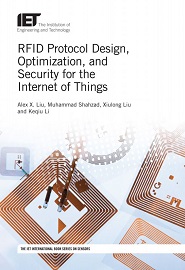
English | 2017 | ISBN: 978-1785613326 | 272 Pages | PDF | 10 MB
Radio-frequency identification (RFID) uses electromagnetic fields to automatically identify and track tags attached to objects. The tags contain electronically stored information. RFIDs have been widely used in countless applications such as object tracking, 3D positioning, indoor localization, supply chain management, automotive, inventory control, anti-theft, anti-counterfeit, and access control. The Internet of Things (IoT) promises a huge growth in RFID technology and usage.
This book covers the topic of RFID protocol design, optimization, and security. RFID systems allow for a much easier and error free inventory management and tracking, but the probabilistic nature of RFID protocols makes the design and optimization complex and challenging. Most existing commercial RFID systems are not well designed. In this book, the authors aim to demystify complicated RFID protocols and explain in depth the principles, techniques, and practices in designing and optimizing them.
Resolve the captcha to access the links!